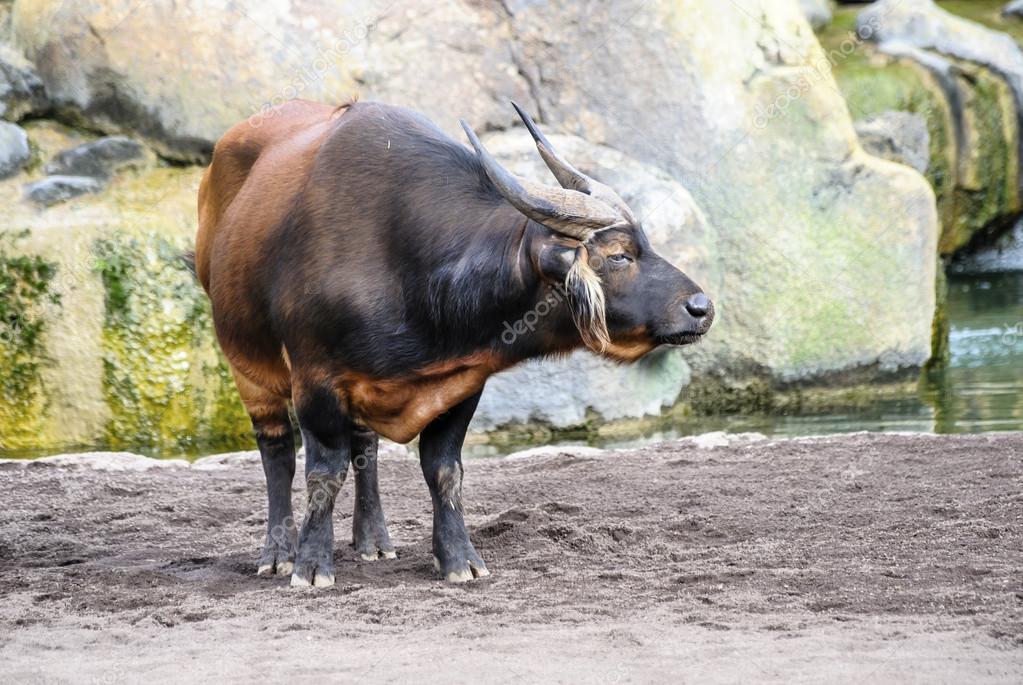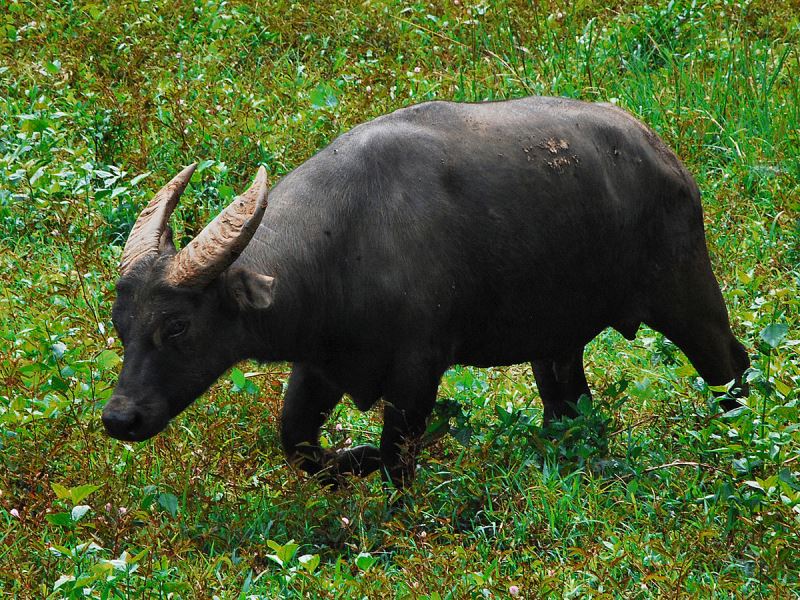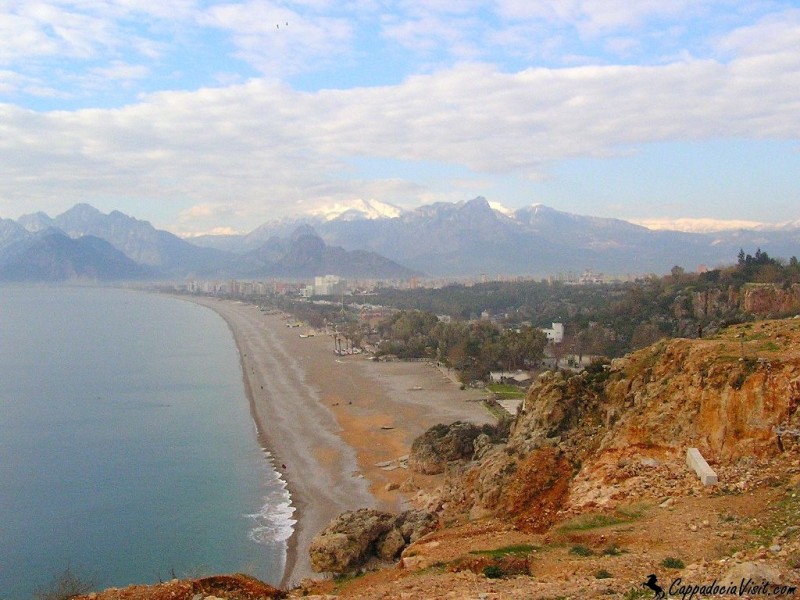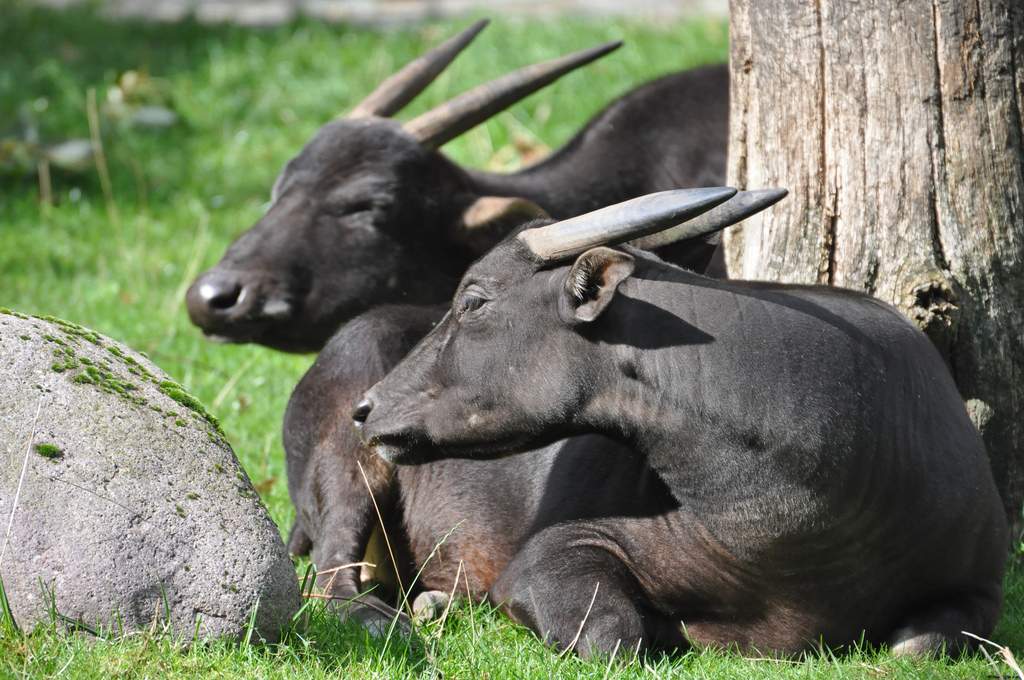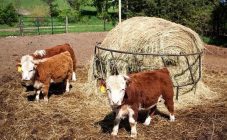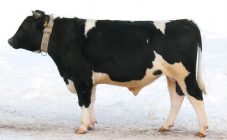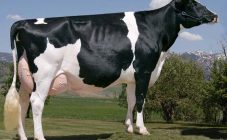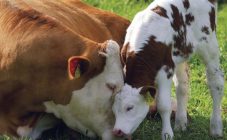Content:
Buffalo is a massive cloven-hoofed animal, the weight of which reaches 1000 kg or more. This animal is considered a draft animal. It is used by people to transport heavy loads over long distances. But there are dwarf buffaloes, the body size of which may be smaller than that of cows, and some subspecies do not grow taller than a ram. The characteristics of these mammals and the peculiarities of their breeding are presented below.
Mini buffalo: characteristic
The small buffalo is very similar to its large relative, but still has characteristic differences. The main feature of this animal: a small, strong body, short massive legs and a thick neck. The wild buffalo-lilliputian lives in the hot countries of Asia and Africa. There are several subspecies of these mammals.
Red buffalo
The natural habitat is the equatorial part of mainland Africa, where forests are located. Of all the small buffaloes, this is the largest. In height, adults reach 1.2 m, and their weight varies in the range of 250-260 kg. The coat has a reddish color, the head and shoulder area has a more intense shade. The most dangerous enemy of animals is the leopard.
Anoah
It is a dwarf wild buffalo native to the forests of Sulawesi Island, Indonesia. His external data differ significantly from other representatives of his species. Among buffaloes, this dwarf looks quite peaceful, outwardly it resembles an antelope. The similarity is due to the presence of straight horns in the animal, which grow upward. This buffalo subspecies is the smallest.
Height at the withers reaches 70 cm, and the weight of adults rarely exceeds 250 kg. The color of the coat can be different, the most common brown and black. In adults, wool is practically absent. Animals have a calm disposition. As a rule, they are grouped in small herds; it is a rarity to meet one buffalo-midget on the island of Sulawesi.
These miniature bulls are conventionally divided into 2 types:
- anoa Carles - lives on the plains. It differs from the mountain type in a longer tail and horns;
- mountain anoa.
Tamarau
The pygmy buffalo lives on the islands of the Philippines. This mammal grows to a maximum of 1 meter and weighs 200-300 kg. The animal's wool is black, can have a gray or brown tint. The horns are powerful, even.
Buffalo dwarf: general rules of home care
The conditions of keeping dwarf buffaloes are as close as possible to the conditions of ordinary cows. Animals graze on the same pastures, can live in an ordinary cowshed, in general, they have many similarities with these representatives of cattle.
Among all livestock breeders, two completely opposite opinions have developed regarding the nature of dwarf buffaloes. It is better to be careful with these animals, some representatives are quite aggressive and forbid themselves to be milked by anyone other than the owner. But, sometimes, even the farmer has to persuade his pet to share his milk.Other farmers, on the other hand, are convinced that buffaloes are quiet and calm, and even more attached to their owners than dogs.
In keeping buffaloes unpretentious, they gladly "absorb" low-value and roughage, which, as a rule, cannot be used for feeding cows. For example, buffaloes eat corn stalks and straw. Buffaloes can be safely walked in forest and swampy pastures, and cows are not recommended to graze in such areas. Buffaloes enjoy coastal vegetation, such as sedges and reeds, and also eat pine needles, ferns and nettles.
Buffaloes are southern animals, therefore, severe frosts are a serious test for them. In the northern regions, farmers must build solid warm barns.
Small buffalo: advantages and disadvantages
Recently, dwarf buffaloes are becoming more and more popular among farmers. This is due to the many advantages of this animal:
- High quality milk with a high percentage of fat. With a properly compiled ration for animals, the fat content of milk can fluctuate between 8.2-10.2%. This buffalo product is used to make cheese and butter. The milk yield is not very high, but due to the high fat content of milk, the content of mini-buffaloes is justified.
- All types of roughage can be used for feeding. Such food does not negatively affect the quantity and quality of milk and meat. That is why it is much more profitable to keep dwarf buffaloes than other representatives of cattle, especially in winter.
- At the genetic level, these animals have excellent adaptive properties and high resistance to diseases, including colds and viral diseases. Animals feel comfortable in hot and humid climates, so in Russia it is recommended to breed them in the southern part of the country, where there are wetlands.
As for the disadvantages, it is worth highlighting the following:
- Small indicators of milk yield in buffaloes. In comparison with buffaloes, under the same conditions of keeping, meat and dairy breeds of cows bring 3 times more milk, and dairy breeds - 6 times.
- The taste of meat is inferior to that of cow meat. Breeders are working to improve the quality of meat products, but today the taste of beef is considered better.
- Buffaloes, especially after calving, are capricious and capricious. It is strongly discouraged to be near the cubs when the female is nearby.
Reproduction
Animals reach sexual maturity at 2 years of age. The dwarf buffalo rut can occur at any time of the year. During breeding periods, you should be especially careful, since males are used to fighting for females, they have fights. Rivalry for the right to procreate comes down to clashes with horns.
Buffalo pregnancy lasts 11-12 months. Immediately before giving birth, the animal tries to retire, behaves aloof. It becomes an integral part of the "team" only at a time when the cub is already confidently standing. This happens quite quickly - the cub gets on its legs half an hour after birth. The babies are under the care of the mother for 9 months.
Babies have a small hairline, which, as the animal grows, is replaced by sparse hairs. The approximate weight of the calf is 40-50 kg. Feeding with mother's milk lasts several months, after which the next stage of feeding begins - feeding on pasture.
The number of dwarf buffalo
Until the early 19th century, dwarf buffaloes were widespread in the forests of Malaysia, but with the development of agriculture, bulls began to leave their former territories, moving away from people. The mountain slopes have become a new habitat for animals.
As for the Anoa, before the outbreak of World War II, the animal population was still impressive. The existing rules of hunting protected dwarf buffaloes from extinction, besides, local residents rarely encroached on their lives. The situation changed dramatically after the war. Firearms appeared at the personal disposal of residents, and hunting became available to them. Hunting rules began to be violated, and the reserves were completely abandoned.
The exact number of wild buffaloes is unknown, but they are on the verge of extinction. Steppe varieties of dwarf buffaloes are deprived of the opportunity to hide from predators and hunters, therefore, their number is significantly reduced.
Breeding prospects in Russia
In Russia, animals are bred mainly in the North Caucasian Federal District, primarily in Dagestan. Local residents are engaged in their reproduction. As a rule, they are used as draft animals. But there are no specialized farms for buffaloes in these parts.
Breeding miniature buffaloes in Russia is a rather promising business. Animals are unpretentious in care and nutrition, have a strong body, and also provide a person with high-quality milk. Breeders are working on developing a breed in which the quality of meat will be improved.
Dwarf buffaloes are amazing creations of nature that combine many positive qualities. In Russia, these animals are not very common; in many regions they can only be found in the zoo. But it is quite possible to engage in their breeding, the main thing is to provide the animals with a warm home and proper care.
